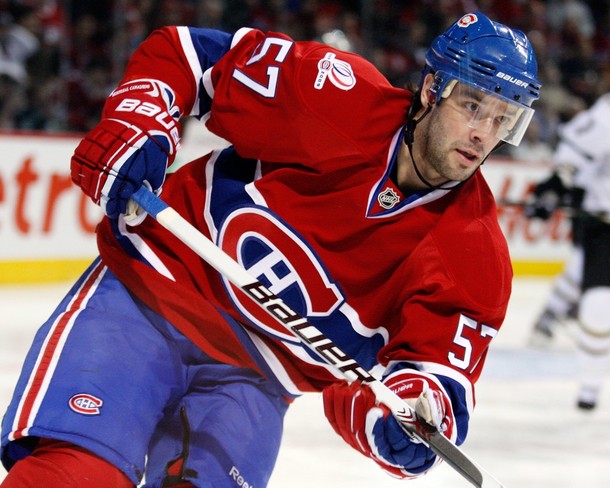During the free agent frenzy, the Rangers added just three depth players, and spent less than $3 million in the process. All the big names went elsewhere for a significant amount of money, so it was refreshing that the organization decided to fill depth holes and not chase big money guys. After acquiring Justin Falk, Danny Syrvet, and Danny Kristo in trades, the Rangers signed Dominic Moore, Aaron Johnson, and Benoit Pouliot.
Pouliot and Moore –who sat out last season while tending to his late-wife’s cancer– are both on cheap deals to help address the fact that the Rangers really haven’t been able to roll four lines that much. With Arron Asham and Darroll Powe on waivers, the two new additions will likely slide into a bottom-six role with the club. On paper, they appear to be upgrades, and address the tertiary scoring needs.
Pouliot, as we noted after the signing, is one of the best in P/60, posting a whopping 2.49 P/60 at even strength. That is better than such names as Lecavalier, Hossa, Kessel, Moulson, Couture, Stepan, and Perry. The 26-year old winger put up 20 points in 34 games last season, which is on pace for a 48-point season over 82 games.
Looking at his shot metrics, Pouliot posted an 8.6 RCorsi, showing he drove puck possession while with Tampa Bay. His Corsi Rel QoC of .290 and OZone start percentage of 49.2% shows that he not only drove puck possession, but does so against decent competition. His player usage chart shows that he was used primarily as a hybrid shut down/two-way forward. When you combine that with his 2.49 P/60, you have a very well-rounded player that will provide much-needed tertiary scoring to a third line sorely in need of an offensive touch.
As for Moore, many will look to his 18 goal season in 2010-2011 and his 40 point season in 2008-2009 and assume that he can be used as a tertiary scoring forward. However, expecting Moore to contribute like that –when he’s more of a 20-30 point forward– is a bit unfair. Moore will likely be used as a fourth line forward in a shutdown role, much like the way San Jose used him in 2011-2012. The Sharks deployed Moore against good competition (.657 Corsi Rel QoC) in a relatively defensive-minded role (42.35 OZone starts). Moore didn’t drive puck possession (-6.4 RCorsi), but this is relatively common for those in this role. Since this is the role that AV will use Moore, we should expect the same.
As for Aaron Johnson, his last full season in the NHL was 2011-2012, when he put together a line of 3-13-16 with Columbus. His peripherals (.075 Corsi Rel QoC, -1.7 RCorsi, 43.2% OZone starts) aren’t impressive, but they aren’t weak either. He’s likely ahead of someone like Danny Syvret on the depth chart, but someone like Justin Falk would likely slide ahead of him, just outside the top-six. He provides nice depth as the #8 defenseman.
One of the biggest questions for the Rangers heading into the offseason was how Slats would address the depth issues the Rangers have faced over the past few seasons. With three trades and three signings, the Rangers appear to be all set with their bottom-six forwards and depth defensemen. The roster was pretty much set after the decision to keep Brad Richards, and now the loose ends are being tied up.
Share:
More About:Analysis

